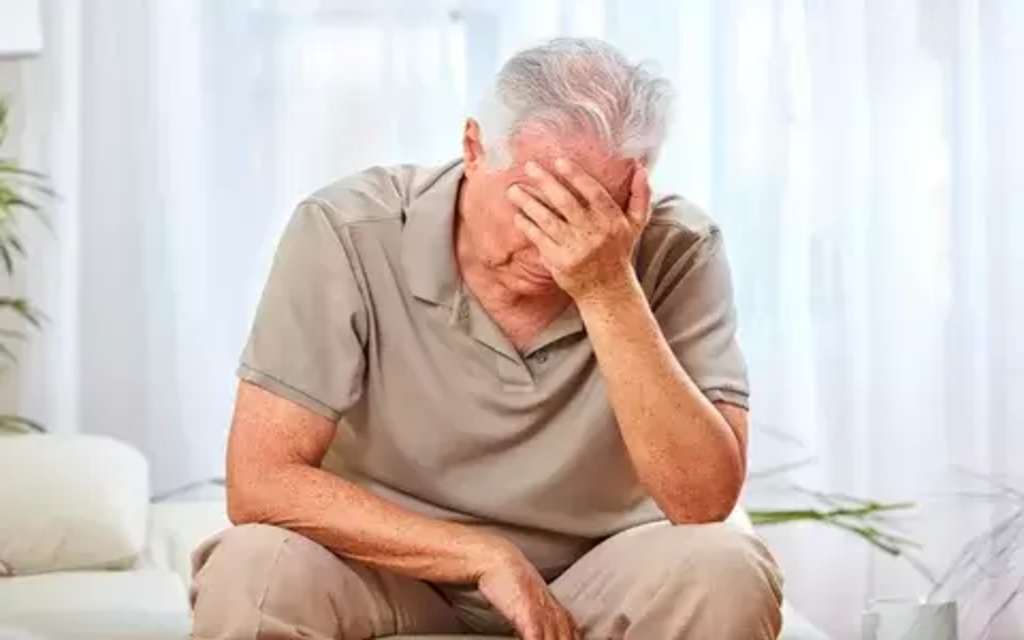Pain is a universal human experience, and as individuals age, it becomes an even more prevalent and complex issue, especially among the elderly population. The understanding of pain in the elderly is a multifaceted subject, as it involves not only physical sensations but also emotional and psychological factors. Understanding pain and depression in the elderly is crucial, as these two conditions often intersect, with chronic pain contributing to increased risk of depression among older individuals.
Table of Contents
Understanding Pain and Depression in the Elderly
The relationship between pain and depression in the elderly is complex, and healthcare providers must take a holistic approach to address these interconnected issues, offering tailored treatments that consider both the physical and emotional well-being of older patients. In this article, we will explore the unique challenges and considerations surrounding pain in the elderly, its impact on their quality of life, and strategies to manage and alleviate pain in this vulnerable demographic.
The Prevalence of Pain in the Elderly
Pain is a common and significant concern for older adults. Studies have shown that more than half of individuals aged 65 and older experience pain on a regular basis. Chronic pain, which persists for three months or longer, is particularly common in this age group, affecting around 40% of elderly individuals. The sources of pain in the elderly can be diverse, including musculoskeletal conditions, arthritis, neuropathic pain, and post-surgical pain, among others. While pain is not an inevitable part of aging, it becomes more prevalent and often more severe as people grow older.
The Complex Nature of Pain in the Elderly
Understanding pain in the elderly involves recognizing that it is a complex, multifaceted phenomenon. Pain can be categorized into two broad types:
Acute Pain: This type of pain is typically associated with an injury or illness and serves as a warning signal. In the elderly, acute pain may result from conditions such as fractures, infections, or surgeries. Their ability to tolerate and respond to acute pain may be altered due to age-related changes in the nervous system.
Chronic Pain: Chronic pain, on the other hand, persists over an extended period, often due to underlying medical conditions. The elderly may experience chronic pain related to degenerative diseases like osteoarthritis, as well as other chronic conditions like diabetic neuropathy or cancer.
Psychosocial Factors
In addition to the physical aspects, it is crucial to recognize the psychosocial factors that contribute to the experience of pain in the elderly. These can include depression, anxiety, loneliness, and decreased social interaction, which may amplify the perception of pain. Furthermore, the fear of falling or experiencing injuries can lead to a cycle of reduced physical activity, which exacerbates pain and reduces overall mobility and independence.
Impact on Quality of Life
Pain in the elderly has a profound impact on their overall quality of life. It can limit their ability to perform daily activities, lead to social isolation, and contribute to depression and anxiety. The fear of pain can deter them from engaging in enjoyable activities and result in a diminished sense of purpose and life satisfaction. Chronic pain can also lead to sleep disturbances, which in turn can affect cognitive function and exacerbate pain perception.
Pain Management in the Elderly
Effective pain management is essential to improve the well-being and quality of life for elderly individuals. However, managing pain in this demographic requires a thoughtful and individualized approach, considering the complexity of their health and social circumstances. Here are some strategies for effective pain management in the elderly:
Comprehensive Assessment: A thorough assessment of pain should take into account its physical, emotional, and social dimensions. This may include discussions with the elderly individual, reviewing medical records, and conducting physical exams.
Medication Management: Pain-relief medications should be carefully prescribed, taking into account potential interactions with other medications commonly used by the elderly. Dosage adjustments may be necessary due to changes in metabolism.
Non-Pharmacological Approaches: Non-drug interventions such as physical therapy, exercise, heat therapy, massage, and cognitive-behavioral therapy can be beneficial in managing pain.
Social Support: Reducing social isolation and providing emotional support can help alleviate psychosocial factors contributing to pain perception.
Fall Prevention: Preventive measures, such as improving home safety and balance training, can reduce the risk of injuries and pain.
Elderly Depression

Depression among the elderly is a significant and often overlooked public health concern. While many associate the golden years of life with happiness and contentment, the reality is that older adults can be vulnerable to depression due to a variety of factors. In this article, we will explore the signs of elderly depression and provide practical guidance on how to recognize and address this issue.
Depression is not a normal part of aging, and it should not be dismissed or ignored. Understanding the signs and symptoms of elderly depression is the first step in addressing this issue effectively. With the right support and intervention, older adults can regain their quality of life and emotional well-being. It is essential to foster a compassionate and empathetic environment where elderly individuals feel comfortable seeking help and receiving the care they need to overcome depression.
Recognizing the Signs of Elderly Depression
Depression in the elderly can manifest differently from depression in younger adults, making it essential to be attentive to specific signs and symptoms. Here are common indicators of elderly depression:
Persistent Sadness: One of the most recognizable signs is a persistent and unexplained sadness. This emotional state can extend for weeks or even months, affecting overall well-being.
Social Isolation: Elderly individuals with depression often withdraw from social activities, avoiding friends, family, and previously enjoyed hobbies.
Sleep Disturbances: Insomnia or an excessive need for sleep can be a sign of depression in the elderly.
Changes in Appetite: A significant weight loss or gain, along with a change in appetite, may be indicative of depression.
Fatigue and Lack of Energy: Depression can lead to overwhelming fatigue and a general lack of energy.
Unexplained Aches and Pains: Physical complaints, such as unexplained headaches or body aches, may be linked to depression.
Cognitive Impairments: Depression can affect memory, concentration, and decision-making abilities, sometimes mimicking the symptoms of dementia.
Negative Self-Talk: Older adults with depression may express feelings of hopelessness, worthlessness, or thoughts of self-harm.
Handling Elderly Depression
Handling elderly depression involves a combination of support, understanding, and professional intervention. Here are some strategies to address this issue:
Open Communication: Encourage open and empathetic communication with the elderly person. Let them know that you are there to listen and offer support without judgment.
Seek Professional Help: If you suspect that an elderly person is experiencing depression, it is crucial to consult a healthcare professional. They can assess the severity of the condition and recommend appropriate treatments, which may include therapy and medication.
Promote Healthy Lifestyle: Encourage regular physical activity, a balanced diet, and adequate sleep. These lifestyle changes can have a positive impact on mental health.
Social Engagement: Encourage participation in social activities and maintain regular contact with friends and family. Reducing social isolation is a vital step in combating depression.
Volunteer and Community Activities: Engaging in volunteer work or community activities can provide a sense of purpose and fulfillment, contributing to a more positive outlook.
Medication Management: In some cases, medication may be prescribed to alleviate the symptoms of depression. Ensure that the elderly person follows their treatment plan, taking medications as directed and attending follow-up appointments.
Monitor for Suicide Risk: If an elderly person expresses thoughts of self-harm or suicide, take these statements seriously and seek immediate professional help.
Create a Supportive Environment: Modify the living environment to make it safe, comfortable, and accessible. Reducing physical stressors can help alleviate some of the emotional burden.
Conclusion:
Pain in the elderly is a prevalent and complex issue that significantly impacts their quality of life. It is essential to understand the unique challenges associated with pain in this demographic, recognizing the physical, emotional, and social aspects of the experience. By adopting a holistic and individualized approach to pain management, we can improve the well-being of the elderly, reduce their suffering, and enhance their overall quality of life. It is a collective responsibility to ensure that the elderly are not only living longer but also living well, free from the burden of unmanaged pain.
Also Read: How to Deal with Elderly Temper Tantrums
Image credit: Yandex.com















